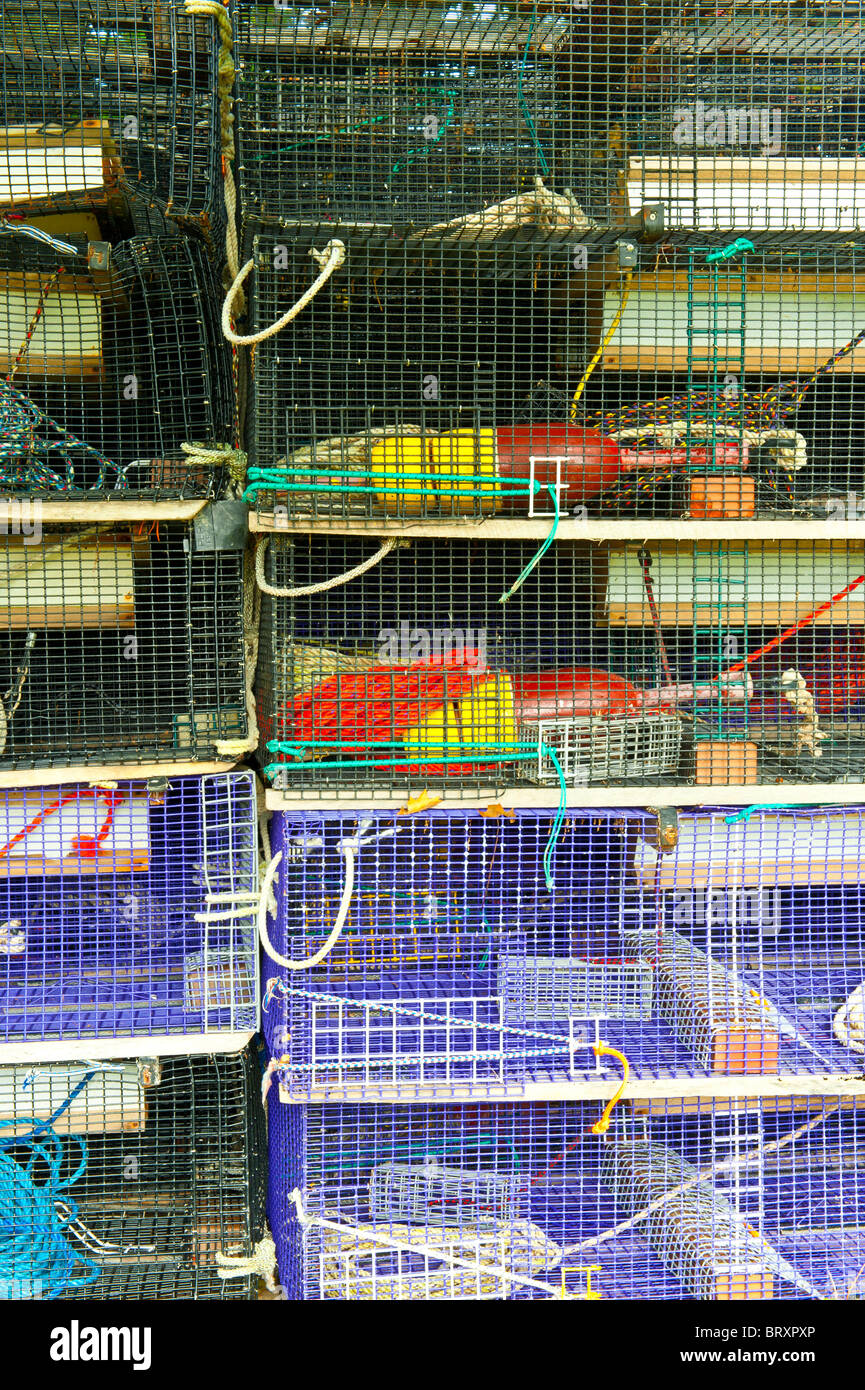Colorful stacked lobster traps and buoys

Image details
Contributor:
Robert Bush / Alamy Stock PhotoImage ID:
BRXPXPFile size:
32 MB (3.5 MB Compressed download)Releases:
Model - no | Property - noDo I need a release?Dimensions:
2727 x 4097 px | 23.1 x 34.7 cm | 9.1 x 13.7 inches | 300dpiDate taken:
10 May 2010Location:
New Harbor, MaineMore information:
Lobster traps are a popular means of catching lobsters. Lobster traps, also called lobster pots, are box-like structures used by the lobstermen for catching many lobsters at a time. Compared to other techniques, lobster traps are considered the better technique to catch lobsters. The frames of the lobster trap are made out of strong wire mesh or plastic wires. Lobster traps are baited with herring or mackerel and are lowered to the sea floor with weights at different depths. During the summer season, the traps are placed at depths from 18 feet to 240 feet. During the winter and spring, the lobster traps are placed at depths of 300 feet or more. Typically, each lobsterman uses 100 to 500 traps per day. During peak season, some fishermen make use of 1000 or more traps. The number of lobsters caught by the fishermen varies based on various factors such as climatic conditions, location of the traps, designs and sizes of the traps. To every lobster trap marked buoys are also attached. This method is used for tracking and separating the lobster traps. Most lobstermen utilize uniquely decorated and colored buoy to mark the location of their traps. Lobster traps are required to have a 2 3/8 × 11½ inch-sized escape hole in it. This escape panel allows younger lobsters to escape the trap.